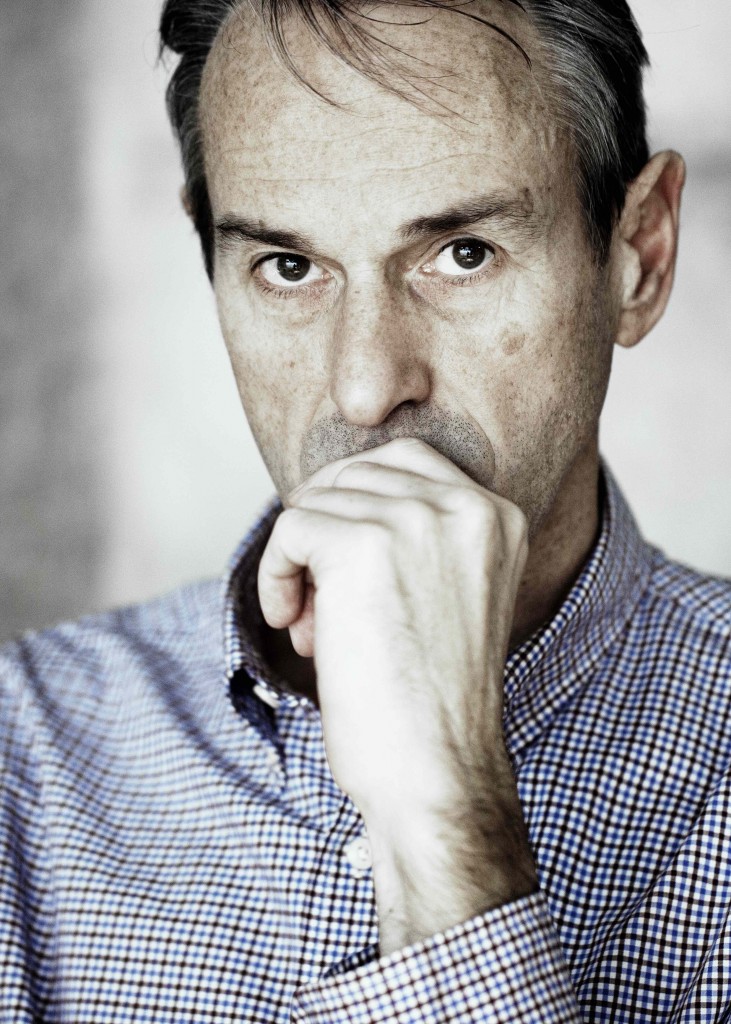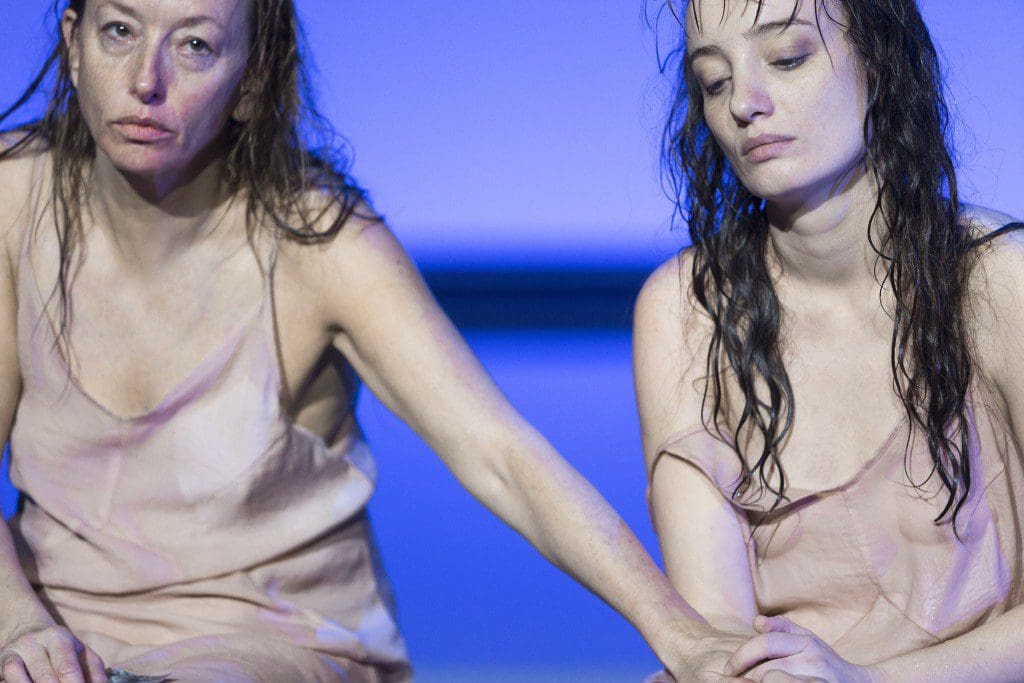Ivo van Hove’s Reel Innovations
by Tom Sellar
When he was a young artist living in Antwerp, Flemish director Ivo van Hove frequented an art house cinema not far from his home. There, sometimes sitting alone in a darkened auditorium, other times among fellow cinephiles, he encountered the masterworks of the postwar screen—Luchino Visconti, Rainer Werner Fassbinder, Pier Paolo Pasolini. Those filmmakers reinvented their medium with radical expressions of subjectivity, spontaneity, and time—and it seems that van Hove absorbed their ambition.
 Thirty years later van Hove—now artistic director of Toneelgroep Amsterdam, one of Europe’s best known and most prestigious theater companies—has become an artist celebrated for (among other accomplishments) devising powerful live performances based on those films. To 21st century audiences his theatrical renderings sometimes serve as first encounters with this cinematic canon.
Thirty years later van Hove—now artistic director of Toneelgroep Amsterdam, one of Europe’s best known and most prestigious theater companies—has become an artist celebrated for (among other accomplishments) devising powerful live performances based on those films. To 21st century audiences his theatrical renderings sometimes serve as first encounters with this cinematic canon.
Among his notable film-to-stage mountings: John Cassavetes’s Faces (1996 and 2005) and Husbands (2011/12); Luchino Visconti’s Rocco and His Brothers (2008) and Teorema (2009); and The Antonioni Project (2009), which drew from the Italian filmmaker (best known for Blow-Up) Michelangelo Antonioni’s bold oeuvre. Last year he even mounted an opera version of the movie Brokeback Mountain for Madrid’s Teatro Real. For many of these projects, van Hove has been the first stage artist granted permission to remake the original. Perhaps that’s because there is little chance he would settle for conventional dramatic adaptations.
Reframing his sources, and filtering them through the sleek, sharp scenic architectures he creates with designer Jan Versweyveld, Van Hove seeks contemporary reverberations—whether he’s working with text from the ancient Greeks, Shakespeare, or Ayn Rand (whose controversial novel The Fountainhead he staged in 2014). He consistently puts the human figure at the center of his scheme, drawn to characters—like Alma and Elizabeth Vogler in Bergman’s Persona—who undergo mythic reckonings with circumstance and painful self-discovery. The actors in his permanent Amsterdam-based ensemble regularly—and fearlessly—journey to psychic and bodily extremes under his careful, nuanced watch.
Considered together, van Hove’s reworked film scenarios could be viewed as a new form emerging from his syntheses of two older ones—and as a leading example of a new capacity for transforming sources in performing arts. In a world now supersaturated with media, how will live arts—theater, dance, performance—find ways to transpose video, film, television, web, and social media into the material dimensions of performance, using corporeality, space, and presence? Could hybrids—not only crossing but transcending traditional disciplines—expand the limits and possibilities of the live? With his large-scale search for theatrical fluidity and convergence with his film sources, van Hove has been opening a door to an even larger investigation—one now being taken up by the next generation of performance-makers.
Van Hove’s visual flair has a reliably contemporary accent, situating classical and recent narratives alike in sleek, postindustrial frames created in collaboration with his longtime designer Jan Versweyveld. But he avoids recalling imagery from the original films when he reshapes them. In fact, the director says, he doesn’t watch the film at all, instead using the original screenplay as a dramatic script to be explored and realized through rigorous experimentation with his company. That approach surprises some people, who rightly recognize his distinctive authorial signature but this is in keeping with van Hove’s larger commitment to text and to actors.
On the other hand, despite this dramatic fidelity to the screenplays, his stagings become independent creations in their own right. Witness the penultimate scene between the catatonic actress Elizabeth Vogler and her obsessive nurse Alma in van Hove’s Persona, and you will see a physical expressivity very different from the controlled flashes of subjectivity Ingmar Bergman creates with the camera. Live performance requires visceral contact with the bodies it exposes; physical dynamism helps compensate for a less focused gaze. For instance, van Hove emphasizes Elizabeth’s vulnerability, her sense of being monitored and watched, by showing her unclothed in early scenes—creating immediacy for the spectator in proximity.
American audiences have had only a few opportunities to glimpse these important and compelling works. Van Hove’s version of Cassavetes’s ironic ode to theatermaking, Opening Night, played at BAM’s Next Wave festival in 2008; his adaptation of Bergman’s Cries and Whispers toured there in 2011. In September 2014 van Hove remounted his 2005 staging of Bergman’s Scenes from a Marriage at New York Theatre Workshop with an American cast, moving spectators from room to room for time-jumping immersions in the various stages of a couple’s lives, later raising the walls and merging eras.
 After the Rehearsal and Persona constitute a dramatic diptych: one evening based on two Bergman works (from 1984 and 1966 respectively). Each half brings to stage a film that reflects on the theater. In After the Rehearsal, a male director working late one evening in the studio enters, by chance, into a desire-fuelled philosophical dialogue with a young actress. Another, older actress appears—a reminder of how aspirations and youth inevitably become something else, something fixed. Articulating their mutual attraction and artistic interdependence, the characters explore the possible lives and selves to come. That is what acting does, what theater does; but are they able to sort through the many masks worn in every relationship and truly understand one another?
After the Rehearsal and Persona constitute a dramatic diptych: one evening based on two Bergman works (from 1984 and 1966 respectively). Each half brings to stage a film that reflects on the theater. In After the Rehearsal, a male director working late one evening in the studio enters, by chance, into a desire-fuelled philosophical dialogue with a young actress. Another, older actress appears—a reminder of how aspirations and youth inevitably become something else, something fixed. Articulating their mutual attraction and artistic interdependence, the characters explore the possible lives and selves to come. That is what acting does, what theater does; but are they able to sort through the many masks worn in every relationship and truly understand one another?
 Persona centers around another crisis of authenticity: Elizabeth Vogler, an actress, has lost her capacity and desire to speak during a production of Electra. Alma, her assigned caregiver, cannot fathom the performer’s roleplaying life nor Elizabeth’s despairing silence, because Alma has suppressed an emotional life and envies the artist. The two engage in a kind of tortured interdependence—art and life, roles and refusals to play them, vulnerability and self-protection. It may be the ultimate irony that these turbocharged contemplations of theater as a metaphor spring from films, but this also testifies to a mutation of forms which van Hove pioneered—and has now mastered.
Persona centers around another crisis of authenticity: Elizabeth Vogler, an actress, has lost her capacity and desire to speak during a production of Electra. Alma, her assigned caregiver, cannot fathom the performer’s roleplaying life nor Elizabeth’s despairing silence, because Alma has suppressed an emotional life and envies the artist. The two engage in a kind of tortured interdependence—art and life, roles and refusals to play them, vulnerability and self-protection. It may be the ultimate irony that these turbocharged contemplations of theater as a metaphor spring from films, but this also testifies to a mutation of forms which van Hove pioneered—and has now mastered.
——–
Tom Sellar is editor of Yale’s international journal Theater and professor at Yale School of Drama. He is co-curator of the 2015 Prelude festival and serves as chief theater critic for The Village Voice.
